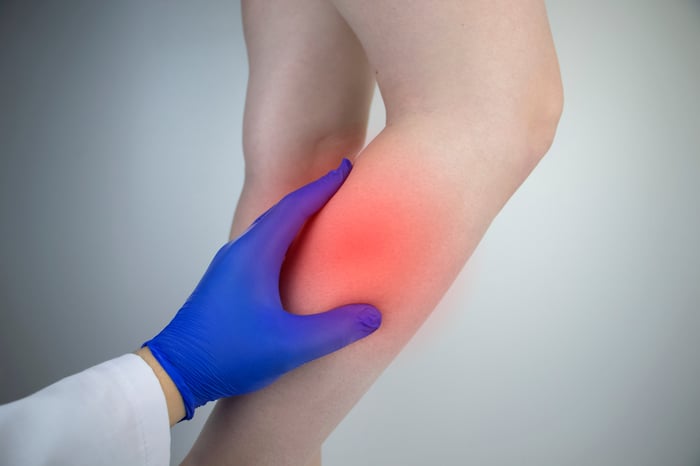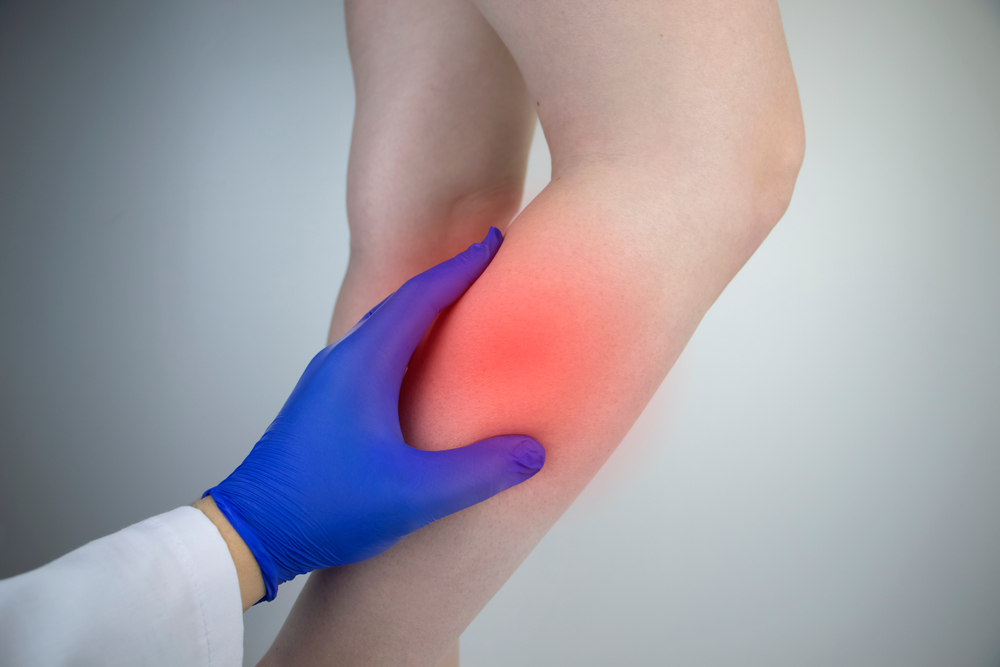What You Should Know About Phlebitis | Missouri Vein Care

I see people in the office who come in with the abrupt onset of leg pain with a red and tender cord that they can see and feel. They are understandably concerned about whether this is an infection or a blood clot. In most cases, this is a condition called phlebitis, which is not dangerous for most people. The tenderness and redness are due to inflammation, which responds to treatment. It is rarely dangerous but can be uncomfortable, as it takes several weeks to resolve.
What You Need to Know About Phlebitis
Key takeaways
-
Phlebitis is inflammation of a vein, usually due to a small clot in a superficial vein.
-
It’s not dangerous for most people and is not an infection.
-
Common symptoms include a red, tender cord or band under the skin, swelling, and pain.
-
It often resolves with ice packs, NSAIDs, and time—usually within weeks.
-
Phlebitis can result from varicose veins, pregnancy, immobility, or vein treatment.
-
Seek help if symptoms include fever, chills, or increasing pain, or if you’re pregnant or have a history of blood clots.
Understanding Phlebitis
Phlebitis is a medical term that refers to vein inflammation, and it almost always is a result of a clot in the vein, called thrombophlebitis. It can be superficial under the skin or affect the deep veins. Most of the time, the inflamed vein also forms a clot inside. This clot is typically not dangerous but depends on its location under the skin (more worrisome in the upper thigh or behind the knee) and whether the deep veins have a clot in them. A red tender cord or band under the skin is the primary symptom of superficial phlebitis. When the vein closes due to various causes, the clot inside triggers an inflammation response. The result is swelling, pain, redness, and tenderness and there is often a visible cord at the site.
Phlebitis can also be a potential indication of an underlying abnormal vein condition and often develops in varicose veins. Other contributing factors are immobility or pregnancy, which are associated with slow blood flow in the leg veins. This abnormal blood flow can cause a blood clot, triggering an inflammation reaction that leads to discomfort and tenderness.

Area of phlebitis with red and brown discoloration from the closed veins.
The management of phlebitis is primarily aimed at alleviating discomfort and resolving the tender red cord. Common treatment strategies include the application of ice packs and the intake of non-steroidal anti-inflammatory drugs (NSAIDs) like aspirin or ibuprofen, which help control inflammation. In severe cases or non-responsive symptoms, you might benefit from prescription oral steroids such as prednisone or methylprednisolone.
Phlebitis is Not an Infection
Phlebitis, though often misunderstood, is a condition that involves inflammation of the veins and is rarely associated with infection. Therefore, the need for antibiotics is uncommon. It typically manifests as red, tender, swollen areas along the affected vein and may cause discomfort. However, signs of an infection often mimic those of phlebitis, leading to confusion for the average person.
An infection not only includes red, tender, swollen skin extending from the red vein cord but also is sometimes accompanied by additional symptoms, such as a fever and chills. These symptoms are often more severe and can indicate a more serious underlying issue. Whenever such symptoms are observed, professional medical help should be sought promptly, as your healthcare provider will conduct a thorough examination to help diagnose the condition accurately. They can determine whether antibiotics or other treatments are needed to address the issue effectively. Proper diagnosis and treatment are crucial in preventing complications and ensuring optimal recovery.
Phlebitis During Pregnancy
Phlebitis might seem alarming to expectant mothers, as it commonly travels up the thigh, potentially causing discomfort and concern that it may go into the deep vein system. This condition involves the inflammation of veins, which can lead to pain, redness, and swelling in the affected area. However, it's important to remember that your OB-GYN is well-equipped to provide you with guidance and recommend the most appropriate treatment plan, ensuring both your health and the well-being of your baby. Regular check-ups and following your OB-GYN's advice can help manage this condition effectively, allowing you to focus on your pregnancy journey with greater peace of mind.
Can Vein Treatments Cause Phlebitis?
Phlebitis is a potential side effect of vein treatments, which may occur because these procedures involve closing down the veins. This condition involves inflammation of a vein, often accompanied by pain and swelling, and can result from the body's natural response to the vein closure. If signs of phlebitis start to occur, you can self-treat with over-the-counter medications, compression stockings, icing the affected area, and walking. Walking not only reduces the chance of significant blood clots but also helps dissolve the clot inside the inflamed vein. Sometimes, the phlebitis is tender enough that compression stockings are painful and should not be worn. If you are still not getting relief, contact your healthcare provider.
What are the Risks Associated with Phlebitis?
Although rare, the closure of a varicose vein due to phlebitis can potentially lead to deep vein thrombosis (DVT), a condition where a blood clot forms in a deep vein, typically in the legs. This risk is higher if you have large and bulging varicose veins leading to your groin or behind your knee. To accurately diagnose DVT and monitor its progression, an ultrasound will show blood flow and detect clots. If a DVT is confirmed, a healthcare professional may administer a blood thinner to reduce the risk of clot growth and prevent further complications.
Superficial phlebitis only slightly increases your risk of DVT. Also, if you have experienced a DVT in the past, your healthcare provider may prescribe a blood thinner to prevent it from occurring again. In the rare occurrence of phlebitis in both your arms and legs, known as migratory thrombophlebitis (very rare) or Trousseau’s sign, this could be an early indication of a different illness like cancer. This is exceedingly rare, and most physicians never see it in their lifetime. In my nearly 40-year career, I've seen it once.
Remember, being informed is your first line of defense. Phlebitis, an inflammation of the veins, can cause discomfort and complications if not addressed. By understanding its symptoms, you are better able to take care of it and seek help when you feel it's necessary.
FAQ – Understanding Phlebitis
Q: What is phlebitis?
Phlebitis is inflammation of a vein, often caused by a small clot (thrombophlebitis) in a superficial vein. It presents as redness, tenderness, and a visible cord under the skin.
Q: Is phlebitis dangerous?
Most cases are not dangerous and resolve with conservative care. However, phlebitis near the groin or behind the knee may require closer evaluation for deep vein thrombosis (DVT).
Q: Is phlebitis the same as an infection?
No. While it may look similar, phlebitis is rarely an infection. Antibiotics are typically not necessary unless you have symptoms like fever, spreading redness, or chills.
Q: How is phlebitis treated?
Most cases respond to NSAIDs like ibuprofen, ice packs, and time. Severe inflammation may require oral steroids. Walking can also help promote healing.
Q: Can vein treatments cause phlebitis?
Yes, vein procedures that close veins can trigger phlebitis. It's usually temporary and treatable with OTC care, though compression stockings may feel too uncomfortable to wear at first.
Q: What if I’ve had a DVT before?
If you’ve had a previous deep vein clot, you’re at higher risk. Your provider may recommend blood thinners or imaging like an ultrasound for evaluation.
Q: What is migratory thrombophlebitis?
Also known as Trousseau’s sign, it’s an extremely rare condition involving clots in multiple limbs. It can signal a serious underlying illness. Most people will never experience this.



